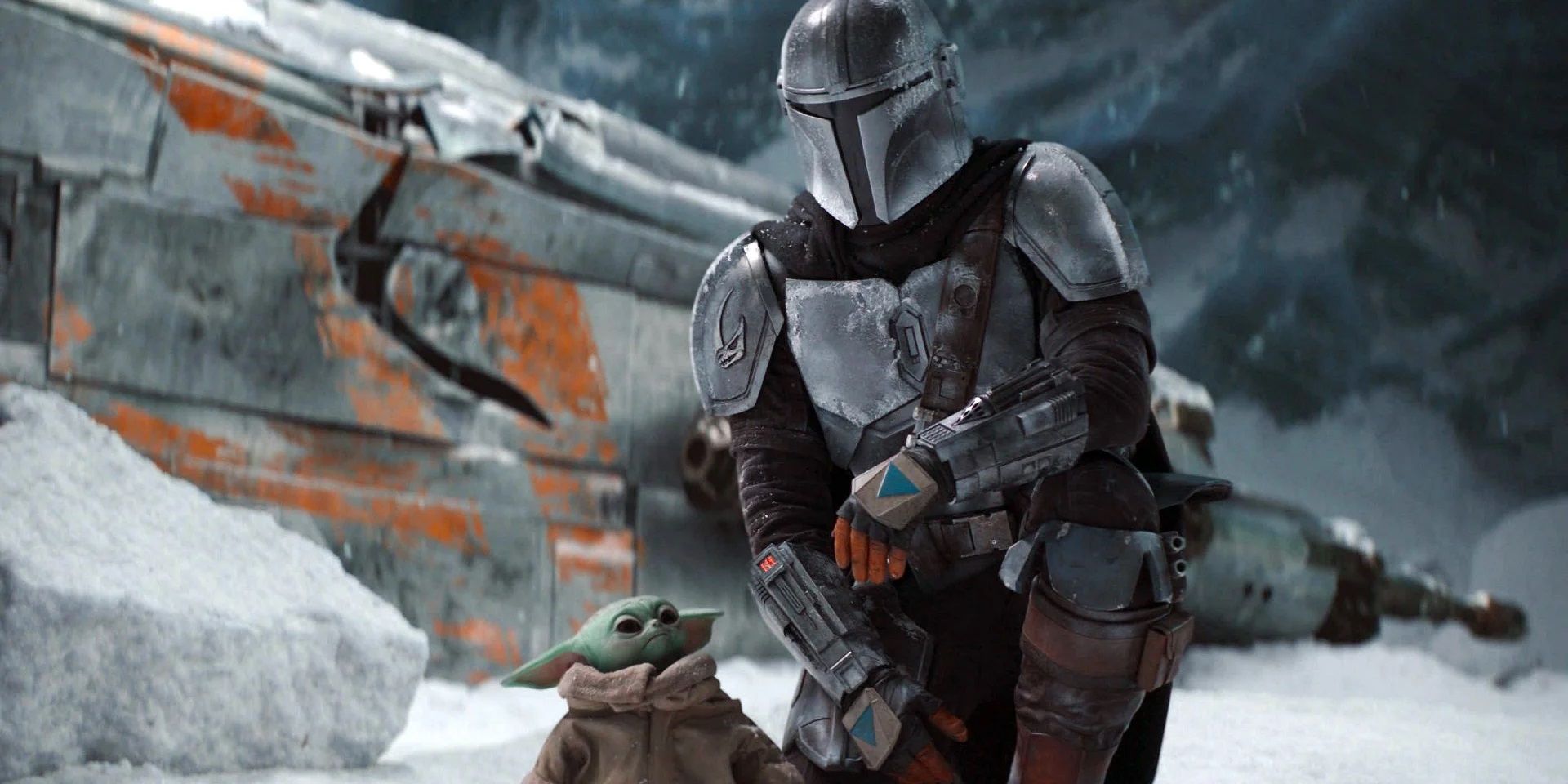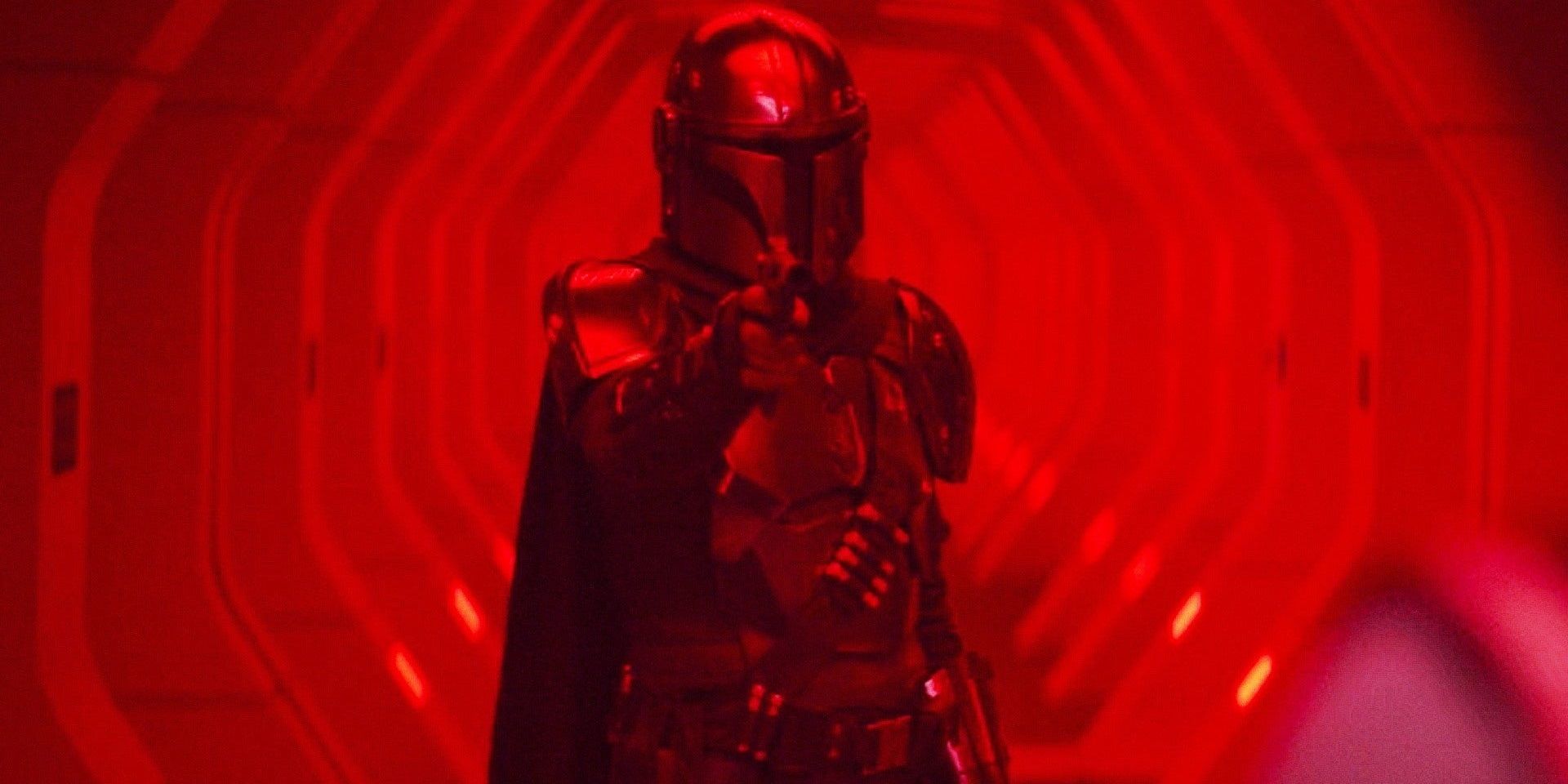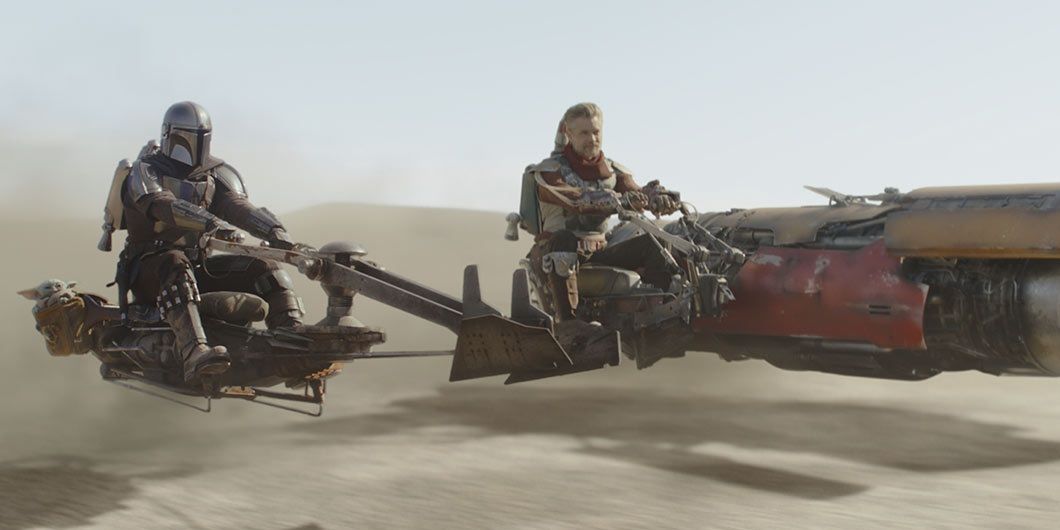The response to The Mandalorian has been mostly positive: “Baby Yoda” became a worldwide phenomenon overnight, Pedro Pascal was catapulted to superstardom despite spending most of the series in a helmet, and the producers scored an unprecedented Emmy nomination for Outstanding Drama Series. But, as with any monumental TV show, it’s not without its detractors. Just like that one guy who substitutes not liking The Wire for a personality, there are some viewers who aren’t impressed by The Mandalorian.
One common criticism of the series is that its formulaic approach is holding it back, but this aspect is arguably The Mandalorian’s greatest strength – and what sets it apart from other TV dramas on the air. The Mandalorian’s traditional adventure-of-the-week storytelling is a callback to shows like Wagon Train and The Virginian, which took their gunslinging western characters on a new quest along the frontier each week.
This kind of episodic storytelling is dying in the age of streaming, but it’s a great way to strengthen characterization and worldbuilding. The episodic format of The Mandalorian allows each episode to feel unique and present fans with an all-new adventure that a first-time viewer could drop in on, while still connecting everything together with season-long story arcs. Prestige TV dramas that feel like giant movies cut into bitesize pieces, like The Sopranos and Breaking Bad, are obviously great, but audiences should be thankful that The Mandalorian is keeping the episodic format alive.
A criticism shared by The Mandalorian and fellow Disney Plus hit WandaVision is that they made the audience wait a long time for the big reveals that explained the shows’ mysteries. The Mandalorian’s endless side missions are roadblocks on his way to discovering the answers to fans’ big questions, but TV audiences used to happily hang in suspense for years to see how the mysteries of a series like Twin Peaks or Lost would eventually pan out (and one of those shows ended up satisfying a lot more fans than the other). The Mandalorian and WandaVision’s backlash really boils down to the audience’s lack of patience with Disney Plus’ weekly release model. But that’s the joy of watching The Mandalorian. Each week brings a whole new Star Wars adventure. It’s not just a chapter in an ongoing narrative; it’s also entirely its own thing.
The episodic style of The Mandalorian also means that most of its individual episodes can be viewed as little mini-movies outside a full rewatch of the series. “Chapter 4: Sanctuary,” directed by Bryce Dallas Howard, is a fun homage to Seven Samurai in which Mando and Cara protect a village from bandits. “Chapter 6: The Prisoner,” directed by Rick Famuyiwa, is a thrilling one-off that sees Mando joining a crew to spring an inmate from a New Republic prison and getting double-crossed at the last second. “Chapter 9: The Marshal,” directed by series creator Jon Favreau, offers a Tatooine-set riff on a classic slay-the-dragon story as Mando and Cobb Vanth band together with Tusken Raiders to blow up a krayt dragon. The show’s self-contained installments allow guest directors like Taika Waititi and Robert Rodriguez to put their own stamp on the Star Wars universe and tell their own story in a galaxy far, far away.
What’s baffling about the criticisms of The Mandalorian’s adventure-of-the-week style is that the show also has serialized storylines running in the background of each episode. “The Prisoner” introduced Migs Mayfeld, who was later integral to Grogu’s rescue in season 2. “The Marshal” teased the return of Boba Fett. The beauty of The Mandalorian is that it can have its cake and eat it, too. Every episode is its own little Star Wars adventure, but it also contributes in ways large and small to ongoing narrative threads that the audience is invested in. The Mandalorian can be enjoyed by fans of episodic shows and fans of serialized shows – everybody wins.
Throughout the show’s second season, episodes like “The Passenger” and “The Heiress” were criticized for sending Mando on side quests. Every week, Mando did somebody a life-threatening favor in exchange for a piece of information they had regarding the Mandalorians or the Jedi that would help him get Grogu back to his people. But every week, despite the distraction of each side quest, Mando got a little closer to accomplishing that goal. The plot progression might’ve seemed slow as the series inched toward the answers to its big questions, but there are plenty of beskar duels and space battles along the way to keep the audience excited until the payoffs arrive.
From Luke Skywalker’s Dark Trooper massacre to Boba Fett’s glorious return to action, the show’s payoffs have all been worth the wait so far, so be patient. The Mandalorian’s production design and groundbreaking visual effects immerse the viewer in the vast Star Wars universe with all their favorite iconography and also a ton of new stuff. The series will answer every pressing question the audience has eventually. In the meantime, just enjoy the ride.



